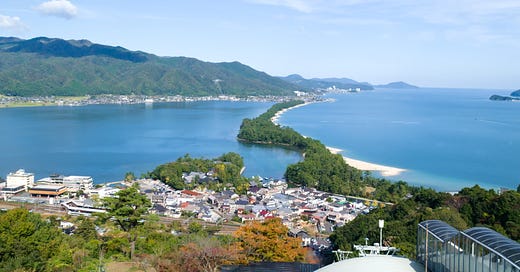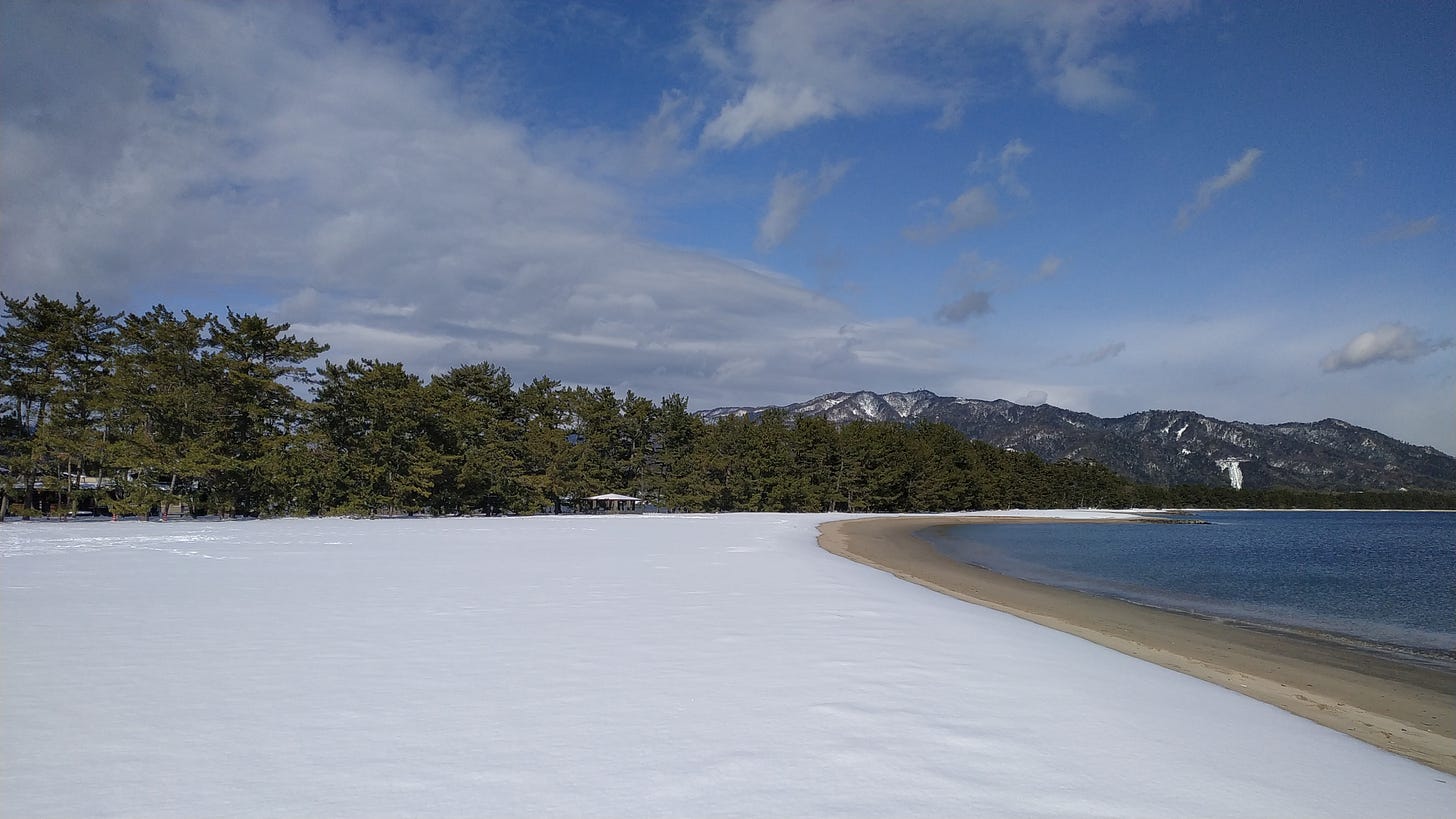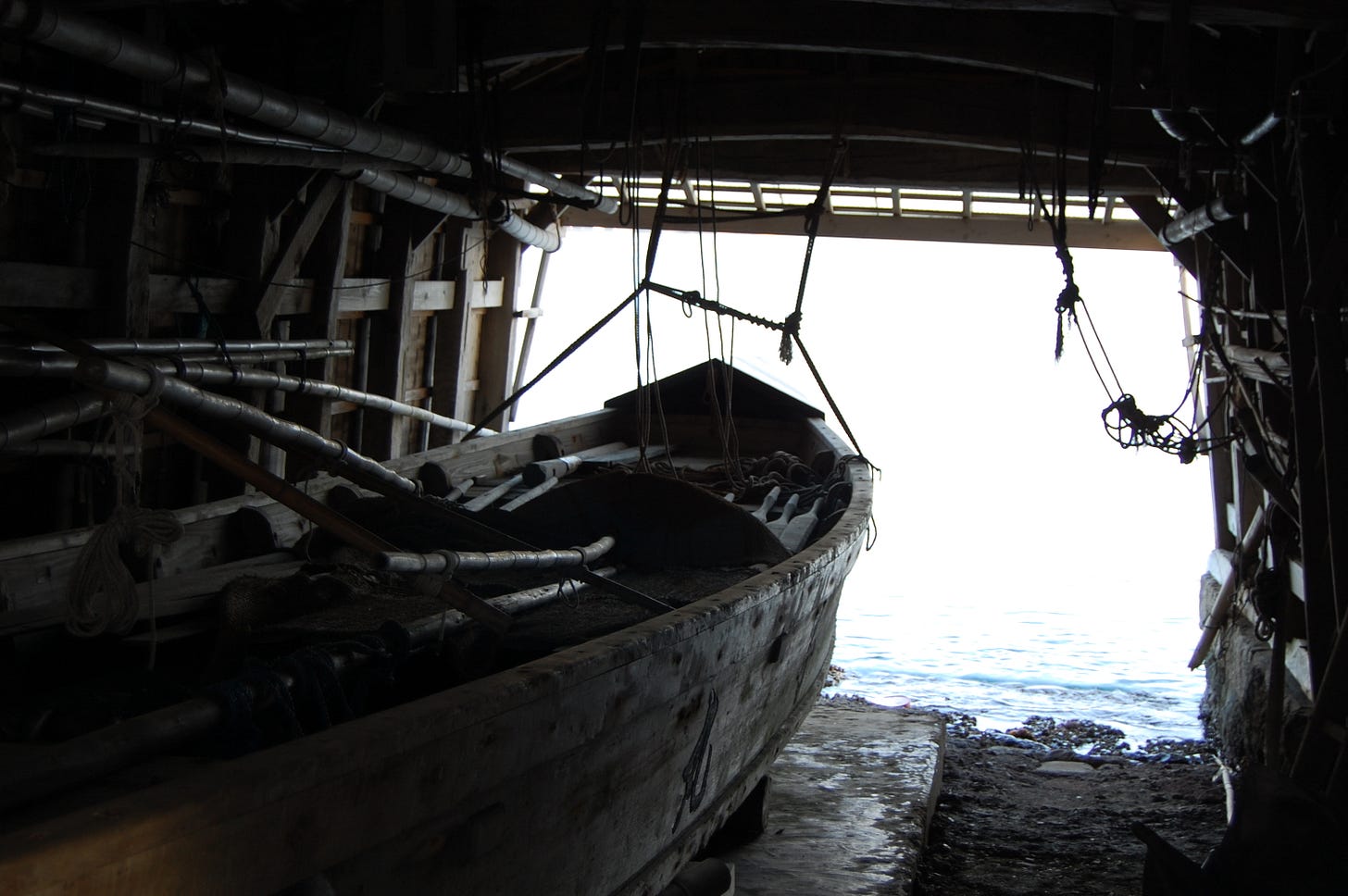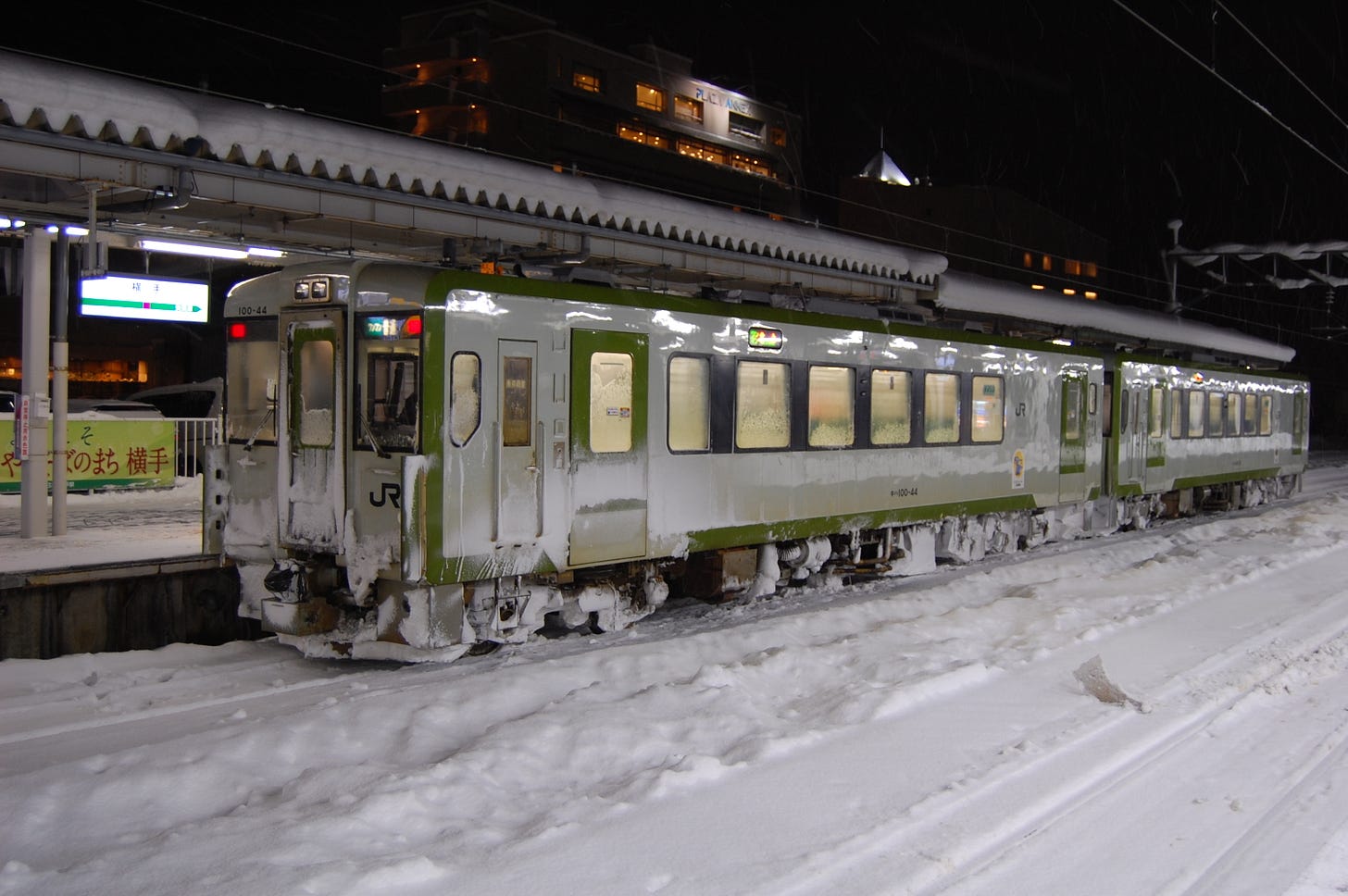Hello Insiders!
In this month’s edition:
Is this the greatest scenic view in all Japan?
Discover the best Japan podcasts
How to handle travel disruptions
The “Bridge To Heaven”
It’s pretty common for good things to come in groups of three, and this is no less true in Japan. There are several lists of three of the “best” from across the country, including night views, festivals, and gardens. But the most famous of these is the so-called Nihon Sankei, the top three celebrated scenic sights.
Supposedly chosen back in the seventeenth century by Confucian scholar Hayashi Gahō, the top three comprises:
Amanohashidate, a sandbar covered with pine trees that spans a stretch of sea
Miyajima, a small island near Hiroshima that will make you believe you’re visiting Jurassic Park (and has the World Heritage site Itsukushima Shrine)
Matsushima, a scenic bay near Sendai with lots of tiny islets, also covered with pine trees.
It’s hard to choose the “best” from this list, since everyone has their own requirements. But picking my favourite is easy: Amanohashidate.
It’s an easy day trip from Kyoto, taking just two hours by limited express or bus. Although it’s not so far away, it’s far enough to keep over-tourism at bay. (It can get busy, but I’ve never experienced it feeling overcrowded like Miyajima.) But of course the biggest attraction is the stunning natural beauty that’s everywhere you look.
The name Amanohashidate can be read to mean “bridge to heaven”, which probably explains the custom here of turning away from the view, then bending down to look at the sandbar from between your legs. Upside-down, it does look like a route up to the sky. You’ll also look rather silly, but then that’s all part of the fun!
Two of the most popular spots for admiring this special vista are Amanohashidate View Land (not far from the railway station) and Kasamatsu Park, on the north side of the sandbar. Unless you have plentiful time or children who want to enjoy the rides at View Land, I’d go straight to Kasamatsu Park.
There are plenty of different things to do at Amanohashidate. If you have time I highly recommend you take a leisurely walk across the sandbar and enjoy the wildlife and feeling of being right in the middle of the sea. Sometimes there’s a tree felled by a lightning strike, and in winter you might be lucky to visit when there’s a blanket of snow.
When the weather is fine, cycling is a great alternative for getting across the sea, and there are several rental shops conveniently located outside the station. The speediest option of course is taking the boat across the bay. A good hour’s walk is then covered in about 10 minutes, and helpfully there are lots of services throughout the day.
However, I’m not done yet.
A short bus ride north of Kasamatsu Park is Ine. Lining the bay with traditional boat houses called funaya, Ine is on a select list of the most beautiful villages in Japan. While Ine welcomes visitors, it’s still very much a working village, meaning that the main attractions here are the views of the funaya and the timeless atmosphere. Ine hasn’t (as far as I know) inspired any of the fantastical places found in Studio Ghibli films, but a stroll around here will certainly make you feel as if you’ve found your way into one.
To get a good look at the funaya from the waterside, you really need to take one of the boat tours around the bay. However, if you head up to Funaya no Sato Park you can also get a great panoramic view. It also has a couple of restaurants, in addition to the handful of cafes and eateries scattered across the village.
For daytrips, it’s worth picking up one of the sightseeing passes that cover the ropeway at Kasamatsu Park, the Ine Bay Cruise, the Amanohashidate sightseing boat, as well as the bus when you need it. However, you should also consider spending the night here, especially if you want to explore Ine without feeling rushed. That said, if you’re anything like me, you might just decide to make a return trip on your next visit to Japan. I must have been here ten times already - but unlike me, that view never gets old.
Amanohashidate and Ine
Combo Pass
Kyoto Amanohashidate Ine Sightseeing 2-day PassWhere to stay
Amanohashidate Hotel
Amanohashidate Youth HostelGet there
The best way of reaching Amanohashidate (including LOTS of snow)
Tea Ceremony, Bento Boxes, and Mosh Pits
When it comes to learning about Japanese culture, it’s difficult to know where to start. But I have just the thing for you. This month, I was asked to host the Let’s Go Tokyo Harklist, a collection of the best moments from different podcasts about Japan. It’s a great way of discovering new podcasts, and by itself it’ll take care of 30 minutes on your flight over. There's a great selection of topics covered, including crazy vending machines, Tsukiji Market, and what to expect at a tea ceremony.
Expect the Unexpected
Compared to many other countries (I’m looking at you, England), Japan is a paradise when it comes to public transportation. It’s clean, safe, and while I can’t say that it’s cheap, it’s usually on time. Like, ridiculously so. However, Japan being Japan, you always have to factor in the possibility of weather having other plans for your trip.
The more I started to think back to my previous journeys, the more incidents I could remember. I’ve had train rides cut short by high winds, domestic flights cancelled because of typhoons, and even been stranded in Kyoto due to heavy snow. I’ve also had to work around railway lines that had to suspend services because of earthquake damage. And while I hope you don’t have to contend with any similar situations on your trip, forewarned is forearmed - so let’s look at how to handle them.
Trains
Bad weather, equipment checks, blizzards - all can lead to severe delays and cancellations. In recent years, railway stations have got better at providing English updates on info screens around the ticket gates, but what do you do if you’re at your hotel, eating breakfast at a cafe, or you’re actually on a train that’s stopped?
JR does give limited English announcements on board, and for details, I’d love to say there’s an app for that - but unfortunately these are Japanese only! So instead head to JR’s service information pages, which give the latest details line by line in English. You’ll soon see what’s running, and what isn’t.
Latest Service Info
Tokaido-Sanyo Shinkansen (Tokyo - Hakata)
JR East (everywhere around and north of Tokyo)
JR West (Kansai, Chugoku, Hokuriku)
Flights
Typhoon season in Japan runs from about May to October, with most running through in August and September. The full service carriers like ANA and JAL tend to handle these disruptions the best, with timely updates by email, and good communication at the airport. However, I’ve found the low-cost carriers like Peach, Jetstar, and the others to be rather underwhelming. I can recall multiple times when I’ve had to hunt down hidden pages on websites trying to find out if a flight will run the following day.
Often the easiest way to get up-to-date information on flights is to check the airline’s Twitter (X if you insist) feed - Peach even has a dedicated English announcements account. And if the airline’s own website doesn’t have the latest info, you can always try the airport’s website, which usually has a page with status info for flights the following day.
And if you’re trying to guess if your trip is going to get disrupted a few days beforehand, you’ll want to head over to the Japan Met’s Typhoon page, where you can track the high-speed proceedings, and projected routes.
Plans B, C, and D
The most important thing for dealing with the unexpected on your trip is simply to be flexible. It’s not the end of the world if you miss out on visiting a certain place. Japan isn’t going anywhere, so do what I do, and just shift it to your next trip (because after your first visit, a second and third become much more likely…)
Then, make the most of the situation. Last year, I had planned to journey up to Tottori in February, only to get stranded in Kyoto due to the snow. That turned out well - an extremely rare chance to catch the famous temples with a wintery coating.
My final tip is not to be over-ambitious with your itinerary - especially the day before your return flight. Once, I spent the last day of my trip in Nagasaki, and planned to take the Sunrise Express overnight to Tokyo in order to catch my flight to England the next morning. The timings were all perfect - there was even a buffer of a couple of hours. However, I didn’t plan for the Sunrise being delayed for over 4 hours, and I missed the flight.
Trip Essentials
Everything you need in one place - get ready and support my work at the same time!
Basics: eSIM / Sim Card / Pocket Wifi / VPN / Travel Insurance / Japanese Phrases
Transport: JR Pass / Regional Passes / Shinkansen Tickets
That’s all for this month! See ya!
Andrew
*There are some affiliate links in this email: I will earn a small commission if you buy something, and it costs you nothing. Cheers!












